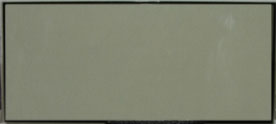|
|
|
There are a number of questions that usually come
up when engineers are considering the use of an LCD shutter. We will try to answer the most
frequently asked questions, however don't hesitate to call us at (440)232-8590 if you
have any questions that are not covered here.
|

|
|
1) Can I replace the shutter in a camera with a liquid cryatal (LCD) shutter? - Except for a few specialized applications (see #5 below) The answer is simple, no. The major problem has to do with the viewing angle of a liquid cryatal shutter. The viewing angle is the direction from which the display will have the maximum contrast. Viewing direction is specified as positions of a clock face. A twelve o'clock viewing angle means that the optimum direction is above the normal to the display, while a part with a six o'clock viewing angle, is best viewed from below the normal. This also implies that there is another angle, away from the preffered viewing direction, where the contrast will be a minimum. This direction is usually (but not always) 180o from the preferred veiwing angle. The contrast at this angle can be extremely low, and at worse it can be difficult to tell if the display is in its clear or opaque state. The net result is that when using an LCD shutter as a replacement to a mechanical shutter there will be a lot of light that leaks around the edges, mostly from the non-preffered viewing angle. Your film or CCD array will be flooded with stray light even though the shutter is in its opaque state. The configuration when this will work satisfactorily is when the incident light is very directional. Then the incomming light can be aligned with the preffered viewing angle without much worry about stray light coming around the edges. Item number #5 below also contributes to the reason that all cameras today don't have LCD shutters. 2) What is the best contrast I can expect in a TN cell? - A contrast ratio of 1000 to 1 can be achieved with a properly designed TN shutter. 3) How fast will a normal liquid crystal shutter switch? - A normal TN LCD shutter will toggle a a rate of about 100 Hz or so. This is a basic limitation of the technology and is not specific to our cells. 4) What if I need to switch at a faster rate? -- Switching at a rate faster than about 100 Hz is possible by using a special type of LC cell called a "pi" cell. A pi cell will switch much faster than a normal TN cell, and they are used almost exclusively for 3D glasses, and other video applications. The down side to the pi cell is that it requires a slightly higher driver voltage, and the driving waveform is somewhat more complex. Go here to find out more about a pi cell. 5) What is the maximum light throughput I can expect from a liquid cryatal shutter in its "clear" state? -- The maximum light throughput you can expect is about 45%. This is true of any display that has polarizers. The polarizers operate by blocking half of the light that hits them. An additional few percent is also lost by scattering in the glass and LC fluid. 5a) Are there any exceptions to #5, I can't take a >50% light loss!? -- There are two exceptions: 1) There are a few LCD like technologies that scatter light instead of blocking it. If your goal is to obscure what is on the other side of the shutter, then maybe scattering the light will be acceptable. If you have film or a CCD array behind the shutter, it will be hopelessly fogged and useless. 2) If your field of view is relatively narrow, 10 degrees or so, there is a solution using a special Opticaly Active LCD Shutter. This is a proven solution, but it is rather specialized and expensive. However, it will work and is worth the trouble for some applications. Go here to find out more about our "Active Domain LCD Shutter". If your application can utilize either of these special devices, please call us at (440) 232-8590 and talk to one of our applications specialists about your project. 6) What is the drive voltage of a typical liquid cryatal shutter? -- The drive voltage for a typical shutter is about 5 volts RMS. A grey scale can be easily achieved by PW modulation of the square wave drive voltage. 7) What if I want the shutter to operate in the IR? UV? -- We can make a shutter that operates in the IR, but it will be extremely expensive. The materials needed to operate in the IR are all special order and are very expensive. They do however work very well. So if you want to work in the IR, hold on to your wallet and give us a call at (440) 232-8590 and talk to one of our applications specialists. As to working in the UV, forget it. Because UV light will destroy the LC fluid inside the cell, the polarizers on the front of the display are made to filter out UV light. |
|
